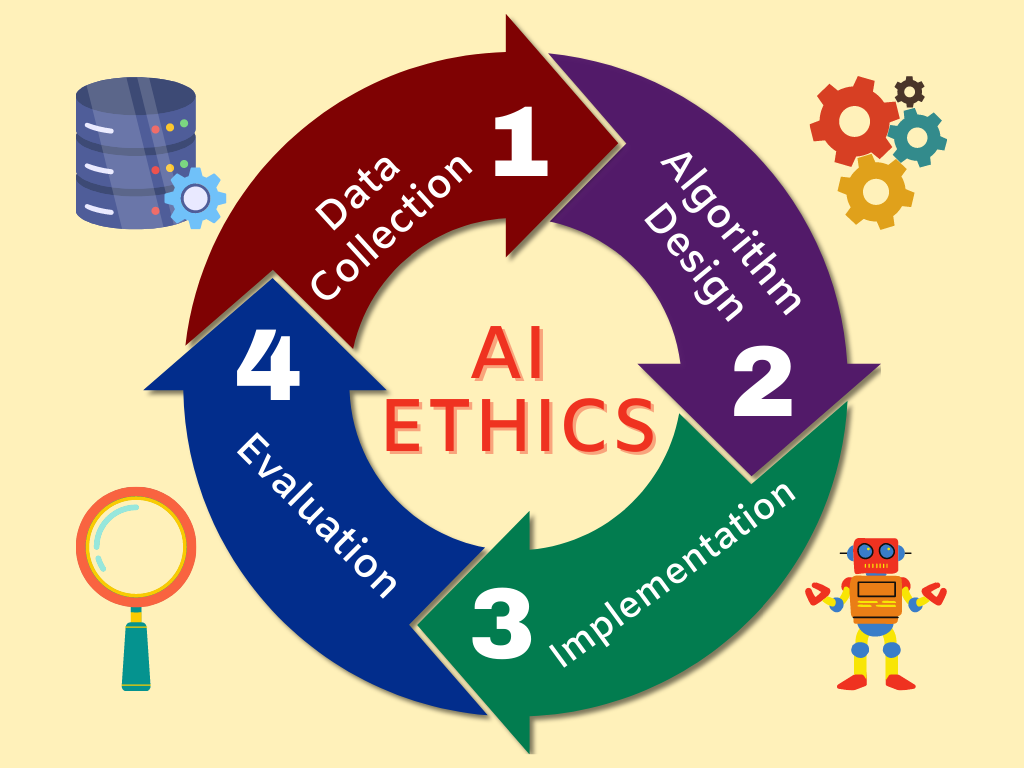
Introduction
The rapid proliferation of Artificial Intelligence (AI) in our daily lives has sparked intense debates on its ethical implications. As AI systems become more capable, it’s crucial to ensure they align with human values and adhere to ethical principles. In this blog post, we will delve into the challenges of responsible AI, highlighting the importance of fairness, transparency, and accountability. We will also explore real-life examples and the steps being taken to make AI more ethical and trustworthy.
The Three Pillars of Responsible AI

- Fairness: AI systems should be designed to minimize bias and ensure equal treatment for all users, irrespective of their background, ethnicity, or gender. For instance, facial recognition technology has been criticized for its inaccuracy in identifying people with darker skin tones [1]. Ensuring fairness in AI requires not only unbiased training data but also continuous monitoring and evaluation.
- Transparency: AI systems should be transparent in their decision-making process, allowing users to understand how and why specific decisions are made. This is particularly important in high-stake domains like healthcare, finance, and the criminal justice system. A lack of transparency may lead to a “black box” effect, where the inner workings of AI algorithms remain opaque, making it difficult to hold them accountable.
- Accountability: AI developers and companies should be held accountable for the consequences of their systems’ actions. This includes establishing clear guidelines and regulations, as well as mechanisms for redress when AI systems cause harm or make erroneous decisions.
Challenges in Implementing Ethical AI

Despite growing consensus on the importance of ethical AI, putting these principles into practice has proved challenging. Diverse cultural, social, and economic factors influence our understanding of what constitutes fairness, transparency, and accountability. Furthermore, AI systems often involve complex trade-offs between these principles, making it difficult to strike a balance.
Real-Life Examples: AI Gone Awry
Several high-profile cases highlight the consequences of not addressing ethical concerns in AI development:
- In 2018, Amazon scrapped its AI recruitment tool after discovering it was biased against female applicants. The system was trained on resumes submitted over a ten-year period and had inadvertently learned gender biases present in the tech industry [2].
- In 2016, a software called COMPAS, used by the US courts to predict criminal recidivism, was found to be biased against African Americans, falsely labeling them as high-risk offenders at twice the rate of white defendants [3].
Addressing the Ethical Gap: Steps Toward Responsible AI
Recognizing the need for ethical AI, researchers, organizations, and governments are taking steps to bridge the gap:
- AI Ethics Guidelines: Several organizations have developed guidelines, such as the European Commission’s High-Level Expert Group on AI, which proposed seven key requirements for trustworthy AI [4].
- AI Ethics Committees: Companies like Google and Microsoft have established AI ethics committees to oversee the ethical implications of their AI research and development [5].
- Regulatory Frameworks: Governments are exploring regulatory frameworks to enforce ethical AI practices, such as the European Union’s proposed AI regulation aimed at addressing high-risk AI systems [6].
Conclusion
As AI continues to permeate our lives, addressing its ethical implications becomes paramount. Ensuring fairness, transparency, and accountability in AI systems is vital for building trust and fostering widespread adoption. By learning from past mistakes and embracing a collaborative approach, we can work toward developing AI technologies that align with our values and stand the test of ethical scrutiny.
References
[1] Buolamwini, J., & Gebru, T. (2018). Gender Shades: Intersectional Accuracy Disparities in Commercial Gender Classification. Proceedings of Machine Learning Research, 81,1-15. Retrieved from http://proceedings.mlr.press/v81/buolamwini18a/buolamwini18a.pdf
[2] Dastin, J. (2018, October 9). Amazon scraps secret AI recruiting tool that showed bias against women. Reuters. Retrieved from https://www.reuters.com/article/us-amazon-com-jobs-automation-insight/amazon-scraps-secret-ai-recruiting-tool-that-showed-bias-against-women-idUSKCN1MK08G
[3] Angwin, J., Larson, J., Mattu, S., & Kirchner, L. (2016, May 23). Machine Bias. ProPublica. Retrieved from https://www.propublica.org/article/machine-bias-risk-assessments-in-criminal-sentencing
[4] European Commission. (2019). Ethics Guidelines for Trustworthy AI. Retrieved from https://ec.europa.eu/digital-single-market/en/news/ethics-guidelines-trustworthy-ai
[5] Metz, C. (2021, April 12). Google’s A.I. Research Star Steps Down From Top Post. The New York Times. Retrieved from https://www.nytimes.com/2021/04/12/technology/google-ai-ethics.html
[6] European Commission. (2021). Proposal for a Regulation of the European Parliament and of the Council laying down harmonised rules on artificial intelligence (Artificial Intelligence Act) and amending certain Union legislative acts. Retrieved from https://eur-lex.europa.eu/legal-content/EN/TXT/?uri=CELEX%3A52021PC0206
Author’s Note
As AI continues to make strides in various domains, it’s essential for individuals, organizations, and governments to remain vigilant in ensuring that AI systems adhere to ethical principles. By staying informed about the latest developments and engaging in open discussions, we can contribute to shaping the future of responsible AI.
Do you have any questions or thoughts on ethical AI? Let us know in the comments below! And if you found this post insightful, don’t forget to share it with your friends and colleagues.



